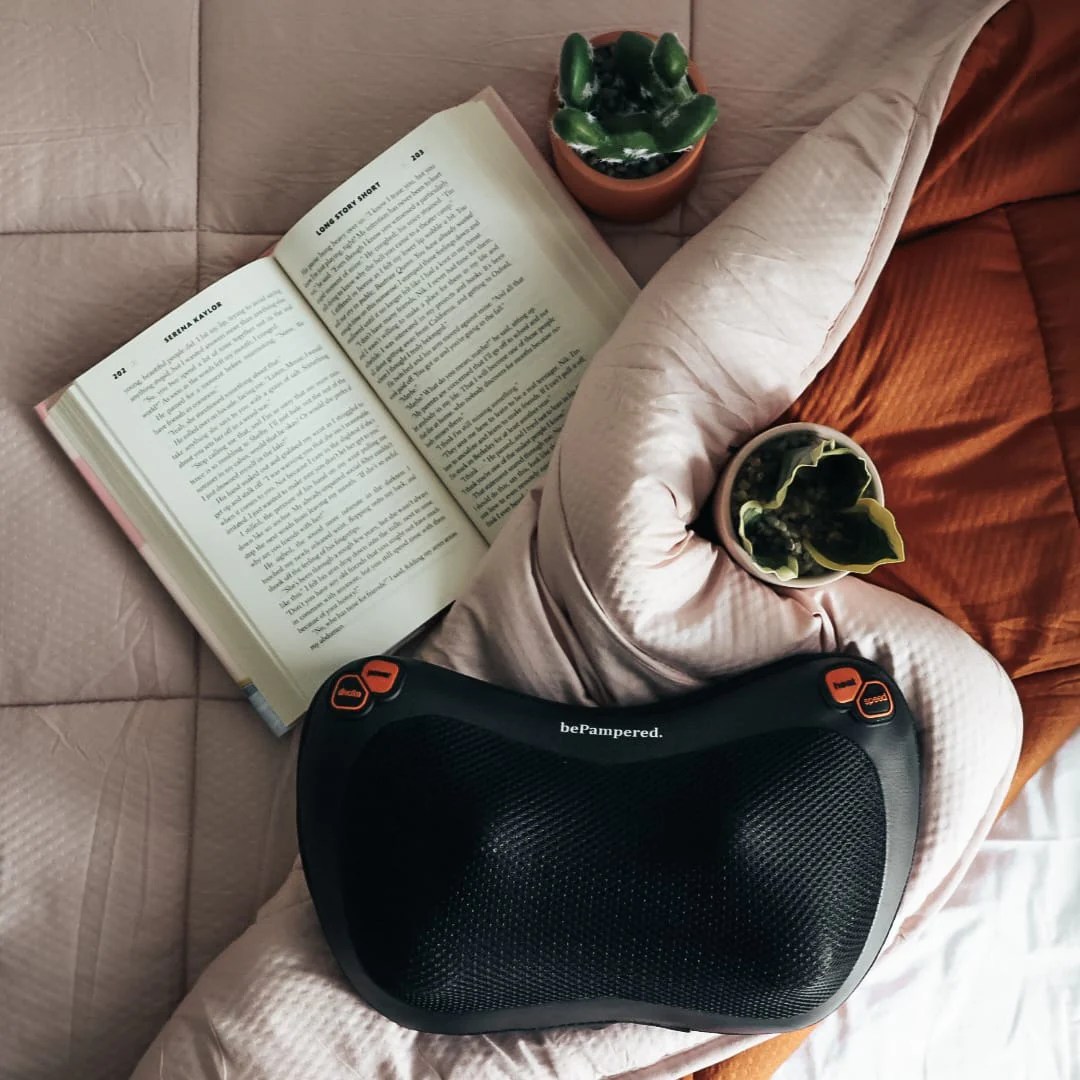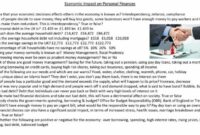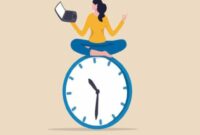The importance of mindfulness and self-care in modern society is undeniable. Our fast-paced, technology-driven world often leaves us feeling overwhelmed, stressed, and disconnected. This constant pressure impacts our mental and physical health, leading to burnout and a decreased quality of life. However, by prioritizing mindfulness and self-care practices, we can cultivate resilience, enhance well-being, and navigate the complexities of modern life with greater ease and purpose.
This exploration delves into the various aspects of mindfulness and self-care, providing practical strategies and insights to help individuals integrate these essential practices into their daily lives.
This examination will cover the escalating rates of stress and anxiety, defining mindfulness and self-care, exploring their numerous benefits, and offering practical methods for integrating them into daily routines, both personally and professionally. We’ll also address how technology can both help and hinder these efforts, and how these practices can be adapted for different age groups and health conditions.
The Prevalence of Stress and Anxiety in Modern Life
Stress and anxiety are increasingly prevalent in modern society, impacting individuals across various demographics and significantly affecting their overall well-being. This pervasive issue stems from a complex interplay of factors inherent in our contemporary lifestyle, technological advancements, and societal structures.
Contributing factors to heightened stress and anxiety levels are numerous and interconnected. The relentless pressure to succeed professionally, often coupled with long working hours and demanding workloads, contributes significantly. Financial instability, housing insecurity, and the ever-present fear of job loss add to the burden. Social pressures, such as maintaining a curated online persona and navigating complex social dynamics, also play a role.
Furthermore, political and environmental uncertainties, including climate change and global conflicts, contribute to a pervasive sense of anxiety and insecurity.
Technology’s Impact on Mental Well-being
The pervasive nature of technology, while offering undeniable benefits, presents a double-edged sword regarding mental well-being. Constant connectivity through smartphones and social media platforms can lead to information overload, fostering a sense of urgency and pressure to constantly respond. The curated, often unrealistic, portrayals of others’ lives on social media can fuel feelings of inadequacy and social comparison, negatively impacting self-esteem.
Cyberbullying and online harassment are also significant contributors to stress and anxiety, particularly among young people. The blurring of boundaries between work and personal life, facilitated by technology, often leads to extended working hours and a lack of downtime, further exacerbating stress levels.
Stress Levels Across Demographics
Stress and anxiety manifest differently across various demographics. Young adults often grapple with academic pressure, career uncertainty, and navigating complex social relationships. Mid-career professionals may face intense competition, demanding workloads, and work-life balance challenges. Older adults may experience stress related to health concerns, financial security, and social isolation. Socioeconomic disparities also play a crucial role, with individuals from lower socioeconomic backgrounds often facing greater stress due to financial insecurity and limited access to resources.
Furthermore, marginalized groups may experience heightened stress due to discrimination and systemic inequalities.
Lifestyle Factors and Stress Levels
The following table illustrates the correlation between various lifestyle factors and stress levels. Note that these are general trends, and individual experiences can vary significantly.
| Lifestyle Factor | Low Stress | Moderate Stress | High Stress |
|---|---|---|---|
| Sleep Quality | 7-9 hours of quality sleep | 6-7 hours of inconsistent sleep | Less than 6 hours or poor sleep quality |
| Physical Activity | Regular exercise (at least 150 minutes/week) | Occasional exercise | Sedentary lifestyle |
| Diet | Balanced diet with fruits, vegetables, and whole grains | Occasional unhealthy food choices | Unhealthy diet high in processed foods and sugar |
| Social Support | Strong social network and support system | Moderate social interaction | Limited social interaction and isolation |
Defining Mindfulness and Self-Care Practices
Mindfulness and self-care are not merely trendy buzzwords; they are essential components of a healthy and fulfilling life, particularly in today’s fast-paced and demanding world. Understanding their core principles and incorporating them into our daily routines can significantly improve our well-being and resilience. This section will explore the definitions and practical applications of both mindfulness and self-care, offering examples and a sample weekly plan.Mindfulness, at its core, is the practice of paying attention to the present moment without judgment.
It involves cultivating awareness of your thoughts, feelings, bodily sensations, and the surrounding environment without getting carried away by them. This non-judgmental observation allows you to observe your experiences as they are, rather than reacting impulsively. Practical applications include mindful breathing exercises, mindful walking, and mindful eating – all designed to anchor you in the present and reduce the grip of racing thoughts or anxieties about the past or future.
For example, during a mindful breathing exercise, you might focus on the sensation of the breath entering and leaving your nostrils, noticing the rise and fall of your chest or abdomen, without trying to change or control the breath itself.
Mindfulness Practices and Their Applications
Mindfulness practices offer a pathway to greater self-awareness and emotional regulation. Regular practice can reduce stress, improve focus, and enhance emotional resilience. Techniques include formal meditation (guided or unguided), body scans (systematically bringing awareness to different parts of the body), and mindful movement practices like yoga. For instance, a body scan might involve lying down and systematically bringing awareness to your toes, feet, ankles, and so on, noticing any sensations without judgment.
This cultivates a deeper connection with your body and helps to reduce tension.
Self-Care Techniques Categorized by Type
Self-care encompasses a wide range of activities aimed at nurturing your physical, emotional, mental, and spiritual well-being. It’s about actively engaging in behaviors that support your overall health and happiness.
The following are examples of self-care techniques, categorized by type:
Physical Self-Care: This focuses on the physical needs of your body. Examples include regular exercise (even a short walk), getting enough sleep, eating a healthy diet, and maintaining good hygiene. Adequate sleep, for example, is crucial for physical and mental restoration; a consistent sleep schedule can significantly impact overall well-being.
Emotional Self-Care: This involves managing and regulating your emotions. Examples include journaling, spending time in nature, engaging in creative activities like painting or music, practicing gratitude, and seeking support from friends or family. Journaling, in particular, can help to process emotions and identify patterns of thinking that might be contributing to stress or unhappiness.
Mental Self-Care: This centers on nurturing your mental health and cognitive function. Examples include engaging in activities that stimulate your mind, such as reading, puzzles, learning a new skill, setting boundaries, and limiting exposure to negative news or social media. Learning a new skill, such as a language or musical instrument, can provide a sense of accomplishment and boost self-esteem.
Spiritual Self-Care: This involves connecting with something larger than yourself and finding meaning and purpose in life. Examples include prayer, meditation, spending time in nature, connecting with your values, and practicing acts of kindness. Connecting with nature, for instance, can offer a sense of peace and tranquility, fostering a feeling of connection to something greater than oneself.
Mindfulness and self-care are crucial for navigating the pressures of modern life. Finding a healthy balance is key, and that often involves making smart financial choices; learning to manage your spending effectively is vital, as detailed in this helpful guide on Balancing luxury lifestyle with financial responsibility. Ultimately, responsible financial habits free up mental space for prioritizing self-care and cultivating a more mindful existence.
Personal Anecdotes Illustrating the Benefits
Incorporating mindfulness and self-care into my daily life has been transformative. For years, I struggled with chronic stress and anxiety. I found that even 10 minutes of daily meditation significantly reduced my anxiety levels. The simple act of focusing on my breath, noticing my thoughts without judgment, allowed me to create space between myself and my racing thoughts.
Additionally, regular walks in nature, a form of both physical and spiritual self-care, helped me to reconnect with myself and appreciate the beauty around me, fostering a sense of calm and perspective. I also started practicing gratitude journaling, noting down three things I was grateful for each day. This simple practice shifted my focus from what was lacking to what was abundant in my life, fostering a more positive outlook.
Sample Weekly Self-Care Plan Incorporating Mindfulness Exercises
This plan is a suggestion and can be adapted to your individual needs and preferences.
| Day | Morning | Afternoon/Evening |
|---|---|---|
| Monday | 5-minute mindful breathing exercise | 30-minute walk in nature |
| Tuesday | 10-minute guided meditation | Journaling session (emotional processing) |
| Wednesday | Mindful stretching | Engage in a hobby (mental stimulation) |
| Thursday | Mindful eating (paying attention to taste and texture) | Spend time with loved ones (social connection) |
| Friday | 5-minute body scan | Relaxing bath or shower |
| Saturday | Longer meditation session (20 minutes) | Engage in physical activity (exercise) |
| Sunday | Rest and relaxation | Practice gratitude journaling |
The Benefits of Mindfulness and Self-Care
Mindfulness and self-care, while often perceived as luxuries, are essential components of a healthy and fulfilling life, particularly in today’s fast-paced and demanding world. Their benefits extend far beyond simple relaxation, impacting our mental, physical, and even professional well-being in profound ways. By incorporating these practices into our daily routines, we can significantly improve our overall quality of life and navigate the challenges of modern society with greater resilience and ease.
Positive Effects of Mindfulness on Mental Health
Mindfulness, the practice of paying attention to the present moment without judgment, offers a powerful antidote to the anxieties and stresses of daily life. By cultivating awareness of our thoughts, feelings, and bodily sensations, we create a space between stimulus and response, allowing us to react more thoughtfully and less reactively. This mindful awareness helps us to identify and manage negative thought patterns and emotional triggers, leading to significant improvements in mental well-being.
Regular mindfulness practice has been shown to reduce symptoms of anxiety and depression, improve emotional regulation, and foster a greater sense of self-compassion. Studies have shown measurable reductions in cortisol (the stress hormone) levels in individuals who practice mindfulness regularly. For example, a study published in JAMA Internal Medicine demonstrated a significant reduction in symptoms of generalized anxiety disorder in participants who engaged in a mindfulness-based intervention.
Impact of Self-Care Practices on Physical Health, The importance of mindfulness and self-care in modern society
Self-care isn’t just about pampering; it’s about actively engaging in behaviors that promote physical health and well-being. Prioritizing adequate sleep, nourishing our bodies with healthy food, and engaging in regular physical activity are all crucial aspects of self-care. These practices have a direct impact on our physical health, reducing the risk of chronic illnesses such as heart disease, diabetes, and obesity.
Sufficient sleep, for instance, allows our bodies to repair and rejuvenate, strengthening our immune system and improving cognitive function. Similarly, a balanced diet provides the essential nutrients our bodies need to function optimally. Regular exercise reduces stress, improves cardiovascular health, and boosts mood. Neglecting self-care, on the other hand, can lead to burnout, decreased immunity, and an increased susceptibility to illness.
Mindfulness, Self-Care, and Increased Productivity and Focus
The connection between mindfulness, self-care, and increased productivity is undeniable. When we prioritize our well-being, we enhance our cognitive function, enabling us to focus more effectively and work more efficiently. Mindfulness helps to quiet the mental chatter that often distracts us, allowing for greater concentration and improved decision-making. Adequate rest and a healthy lifestyle, key components of self-care, further enhance our cognitive abilities, reducing mental fatigue and improving our capacity for sustained attention.
For instance, a study published in the journal “Personality and Individual Differences” showed that individuals who practiced mindfulness exhibited improved attentional control and reduced mind-wandering. This translates to increased productivity and a greater ability to accomplish tasks effectively.
In today’s fast-paced world, mindfulness and self-care are crucial for preventing burnout. Entrepreneurs, especially, need to prioritize their well-being, which is why creating a strong personal brand is so important. Check out this guide on Creating a luxury lifestyle brand for entrepreneurs to learn how to build a brand that reflects your values and supports your self-care journey.
Ultimately, a balanced life, incorporating both ambition and self-compassion, leads to greater success and fulfillment.
Significant Advantages of Mindfulness and Self-Care
The benefits of incorporating mindfulness and self-care into our lives are numerous and far-reaching. Here are some of the most significant advantages:
- Reduced stress and anxiety levels
- Improved emotional regulation and resilience
- Enhanced sleep quality and overall physical health
- Increased productivity and focus
- Greater self-awareness and self-compassion
- Improved mental clarity and cognitive function
- Reduced risk of chronic illnesses
- Increased feelings of well-being and happiness
Integrating Mindfulness and Self-Care into Daily Life

Source: co.nz
Integrating mindfulness and self-care into our busy lives isn’t about drastic overhauls; it’s about making small, sustainable changes that accumulate over time. It’s about weaving these practices into the fabric of our daily routines, rather than viewing them as separate, burdensome tasks. This requires identifying common obstacles and developing practical strategies to overcome them.
Common Barriers to Practicing Mindfulness and Self-Care and Strategies to Overcome Them
Many people struggle to incorporate mindfulness and self-care due to time constraints, perceived lack of importance, or difficulty finding effective techniques. Overcoming these requires a shift in perspective and the development of personalized strategies. For instance, believing self-care is selfish can be countered by understanding its importance in maintaining overall well-being and increasing productivity. Time constraints can be addressed by incorporating short, mindful moments throughout the day, rather than aiming for lengthy sessions.
Practical Tips for Incorporating Mindfulness into Daily Routines
Mindfulness doesn’t require hours of meditation; it can be woven into everyday activities. During commutes, focus on the sensations of driving—the feel of the steering wheel, the sounds around you. At work, take short breaks to practice deep breathing exercises or simply observe your thoughts and feelings without judgment. Even washing dishes can become a mindful activity, focusing on the warmth of the water, the texture of the dishes, and the process itself.
These small moments of presence accumulate throughout the day, fostering a greater sense of calm and awareness.
Methods for Creating a Supportive Environment Conducive to Self-Care Practices
Creating a supportive environment involves consciously designing spaces and routines that encourage self-care. This could include designating a quiet corner for meditation or yoga, creating a relaxing bedtime routine, or incorporating nature into your daily life through walks or gardening. Surrounding yourself with positive influences, such as supportive friends and family, and limiting exposure to stressors like excessive social media use, can also contribute significantly.
Ultimately, the goal is to cultivate an environment that nurtures your physical and mental well-being.
Integrating Mindfulness Techniques into Different Aspects of Daily Life
Mindfulness can enhance various aspects of daily life. At work, mindful breathing techniques can reduce stress during demanding projects. In relationships, mindful listening—paying attention to your partner’s words and emotions without interruption—can strengthen communication and intimacy. During leisure activities, such as hiking or painting, practicing presence allows for a deeper appreciation of the experience. By consciously integrating mindfulness into these diverse areas, we can cultivate a more balanced and fulfilling life.
For example, a busy executive might incorporate a 5-minute mindful breathing exercise before important meetings to reduce anxiety and improve focus, demonstrating a practical application of mindfulness in a high-pressure work environment.
Mindfulness and Self-Care in the Workplace: The Importance Of Mindfulness And Self-care In Modern Society
The increasingly demanding nature of modern work environments often leads to high levels of stress and burnout among employees. Implementing mindfulness and self-care programs can significantly mitigate these negative effects, fostering a healthier, more productive, and engaged workforce. This section explores the potential benefits of such initiatives, how employers can support them, and the impact on employee well-being and overall organizational success.
Potential Benefits of Workplace Mindfulness and Self-Care Programs
Mindfulness and self-care programs in the workplace offer a multitude of benefits, impacting both individual employees and the organization as a whole. Reduced stress and anxiety are among the most significant outcomes, leading to improved mental and physical health. Employees who practice mindfulness often report increased focus, concentration, and emotional regulation, translating to enhanced productivity and better decision-making.
Furthermore, these programs can foster a more positive and supportive work environment, strengthening team cohesion and improving communication. Studies have shown a correlation between mindfulness practices and decreased absenteeism and employee turnover, resulting in significant cost savings for the company. Finally, a commitment to employee well-being through these programs enhances the company’s reputation and attractiveness to potential employees.
Employer Support for Employee Well-being Through Mindfulness and Self-Care Initiatives
Employers play a crucial role in fostering a culture that prioritizes employee well-being. This can be achieved through several initiatives. Offering subsidized or free access to mindfulness apps, workshops, or on-site meditation sessions demonstrates a tangible commitment to employee health. Creating designated quiet spaces or relaxation areas within the workplace allows employees to practice mindfulness techniques during their workday.
Integrating mindfulness exercises into team meetings or training sessions can normalize these practices and encourage participation. Furthermore, promoting a work-life balance through flexible work arrangements and reasonable workloads reduces stress and burnout. Encouraging open communication about mental health and providing access to Employee Assistance Programs (EAPs) further supports employee well-being. Finally, leadership training focused on empathy, compassion, and mindful communication can create a more supportive and understanding work environment.
Impact of Stress Management Techniques on Employee Productivity and Job Satisfaction
Effective stress management techniques, including mindfulness and self-care, have a demonstrably positive impact on employee productivity and job satisfaction. Reduced stress levels lead to improved focus and concentration, resulting in higher quality work and increased efficiency. Employees who feel supported and valued are more likely to be engaged and motivated, contributing to higher job satisfaction and reduced turnover.
In today’s fast-paced world, mindfulness and self-care are crucial for well-being. Finding true fulfillment often means looking beyond material wealth; it’s about prioritizing inner peace and genuine happiness. That’s why understanding how to cultivate a rich life that transcends possessions, as explored in this insightful article, Achieving a fulfilling luxury lifestyle beyond material possessions , is so important.
Ultimately, a balanced life, rich in both mindful moments and meaningful experiences, is the true luxury.
Studies have shown a strong correlation between stress reduction programs and improvements in employee morale, leading to a more positive and collaborative work environment. For example, a company that implemented a mindfulness program reported a 20% reduction in sick days and a 15% increase in employee productivity within six months. This demonstrates the tangible return on investment associated with prioritizing employee well-being.
Implementing a Workplace Mindfulness Program: A Step-by-Step Guide
Implementing a successful workplace mindfulness program requires careful planning and execution. The first step involves securing buy-in from leadership, demonstrating the benefits and securing necessary resources. Next, assess employee needs and preferences through surveys or focus groups to tailor the program effectively. Choose appropriate mindfulness techniques, such as guided meditation, mindful breathing exercises, or body scans, considering the diverse needs and preferences of the workforce.
Partner with qualified instructors or mindfulness experts to deliver engaging and effective training sessions. Provide ongoing support and resources, such as access to apps, online materials, or peer support groups, to reinforce learning and encourage consistent practice. Finally, regularly evaluate the program’s effectiveness through feedback surveys and data analysis to ensure its continued relevance and impact. This iterative approach allows for adjustments and improvements, maximizing the program’s benefits for employees and the organization.
Mindfulness and self-care are increasingly crucial in our fast-paced world, helping us navigate stress and prioritize well-being. This is especially relevant as we consider how technology shapes our lives; understanding this connection is key. Check out this insightful article on The future of luxury lifestyle and technological advancements to see how future trends might impact our approach to self-care.
Ultimately, integrating mindfulness into our increasingly tech-driven lives is essential for a balanced future.
The Role of Technology in Supporting Mindfulness and Self-Care
Technology has profoundly impacted our lives, and its influence extends to the realm of mindfulness and self-care. While traditional practices remain vital, technology offers accessible and convenient tools for cultivating inner peace and well-being. This section explores the benefits and drawbacks of using technology to support these crucial aspects of a healthy lifestyle.
Mobile Applications and Online Resources for Mindfulness and Self-Care
Numerous mobile applications and online resources are designed to promote mindfulness and self-care. These range from guided meditation apps offering a variety of practices for different needs and experience levels, to apps tracking mood, sleep, and activity levels, providing insights into personal well-being patterns. Examples include Headspace, Calm, and Insight Timer, which provide guided meditations, breathing exercises, and mindfulness techniques.
Other apps focus on specific aspects of self-care, such as sleep hygiene (Sleep Cycle, Pillow) or journaling (Day One, Journey). Websites offering articles, videos, and online courses on mindfulness and self-care practices also contribute significantly to broader access to these resources.
Potential Downsides of Relying Solely on Technology for Mindfulness and Self-Care
While technology offers valuable tools, over-reliance on it for mindfulness and self-care can have drawbacks. Excessive screen time, even with mindfulness apps, can lead to digital exhaustion and ironically, increased stress and anxiety. The curated nature of many apps might not cater to individual needs and preferences effectively, potentially limiting the depth and effectiveness of practice. Furthermore, the lack of human interaction inherent in many technological approaches can hinder the development of crucial social support networks, which are essential for overall well-being.
Finally, the potential for distraction and the constant accessibility of technology can disrupt moments of genuine presence and reflection.
Comparison of Technology-Based and Traditional Mindfulness Practices
Technology-based mindfulness practices offer convenience and accessibility, making them particularly appealing to busy individuals. However, traditional methods, such as in-person meditation retreats or yoga classes, often provide a deeper sense of community and connection, fostering a more immersive and potentially more impactful experience. The effectiveness of either approach depends on individual preferences, commitment, and the specific techniques employed.
Studies have shown positive effects from both, but the social and experiential aspects of traditional practices might offer additional benefits for some individuals.
Hypothetical Mindfulness App: “Inner Harmony”
“Inner Harmony” is a hypothetical mindfulness app designed to personalize the user experience. It would feature a comprehensive library of guided meditations categorized by duration, style (e.g., loving-kindness, body scan), and focus (e.g., stress reduction, sleep improvement). Users could create personalized schedules and receive gentle reminders throughout the day. The app would also incorporate mood tracking, sleep monitoring, and journaling prompts to help users identify patterns and gain insights into their well-being.
A unique feature would be a community forum where users can share experiences and support each other, fostering a sense of connection and shared journey. Finally, the app would offer integration with other health and fitness apps to provide a holistic view of the user’s well-being.
Mindfulness and Self-Care for Specific Populations
Mindfulness and self-care practices, while universally beneficial, require tailored approaches to effectively address the unique needs and challenges faced by different populations. Adapting these practices considers developmental stages, pre-existing conditions, and individual circumstances to maximize their positive impact. This section explores how mindfulness and self-care can be specifically tailored for various groups.
Mindfulness and Self-Care for Adolescents
Adolescence is a period of significant physical, emotional, and social change, often marked by increased stress, anxiety, and pressure to succeed. Mindfulness techniques can help adolescents manage these challenges by teaching them to regulate their emotions, improve focus, and build resilience. For example, mindful breathing exercises can help calm anxiety before exams, while body scan meditations can increase self-awareness and reduce stress related to social situations.
Self-care practices like regular exercise, healthy eating, and sufficient sleep are also crucial for supporting adolescent well-being. Adapting mindfulness to this age group might involve using interactive apps, incorporating mindfulness into school curricula, or utilizing group activities to foster a sense of community and shared experience.
Mindfulness and Self-Care for the Elderly
Older adults may face unique challenges such as physical limitations, chronic health conditions, and social isolation. Mindfulness and self-care can help mitigate these issues and improve quality of life. Gentle forms of movement like chair yoga combined with mindful breathing can improve physical function and reduce pain. Mindful activities like gardening or knitting can provide a sense of purpose and connection.
Social engagement through mindful group activities can combat loneliness and isolation. The elderly may benefit from simpler, shorter mindfulness exercises, adapted to their physical abilities and cognitive function. For instance, focusing on the sensations of touch during a hand massage can be a highly effective mindfulness practice.
Mindfulness and Self-Care for Individuals with Anxiety Disorders
Mindfulness-Based Stress Reduction (MBSR) and Mindfulness-Based Cognitive Therapy (MBCT) have been shown to be effective treatments for anxiety disorders. These programs typically involve weekly group sessions and daily home practice of mindfulness meditation, body scan, and yoga. The techniques help individuals become more aware of their anxious thoughts and feelings without judgment, reducing their reactivity and intensity. Self-care practices such as regular exercise, healthy diet, and sufficient sleep are also crucial components of managing anxiety.
For individuals with severe anxiety, it is important to work with a mental health professional to determine the most appropriate approach and integrate mindfulness practices into a broader treatment plan.
Mindfulness and Self-Care for Individuals with Chronic Pain
Mindfulness can be a valuable tool for managing chronic pain by shifting the focus away from the pain itself and towards the present moment experience. Mindful movement practices such as gentle yoga or Tai Chi can improve flexibility, strength, and reduce pain intensity. Mindful breathing and body scan meditations can help individuals become more aware of their pain sensations without getting caught up in negative thoughts and emotions.
Self-care practices such as regular exercise (within pain limits), stress management techniques, and adequate rest are also essential for managing chronic pain. It is important to work with healthcare professionals to develop a comprehensive pain management plan that integrates mindfulness and other evidence-based approaches.
Comparative Effectiveness of Mindfulness Techniques Across Populations
The effectiveness of different mindfulness techniques varies depending on the individual and their specific needs. For example, while MBSR might be highly effective for managing stress and anxiety in adults, a more playful and interactive approach might be more suitable for adolescents. Similarly, for individuals with physical limitations, gentle movement-based practices might be more appropriate than more strenuous forms of mindfulness.
Research consistently demonstrates the benefits of mindfulness across various populations, but the optimal approach requires careful consideration of individual circumstances.
Visual Representation of Mindfulness and Self-Care Across Life Stages
Imagine a vibrant, circular graphic representing the lifespan. The circle is divided into segments representing different life stages: childhood, adolescence, adulthood, and old age. Each segment features small icons representing age-appropriate mindfulness and self-care practices. For childhood, playful activities like mindful coloring or nature walks are depicted. Adolescence shows icons for mindful breathing exercises, sports, and social connection.
Adulthood includes icons for meditation, yoga, healthy eating, and time management. Old age displays icons for gentle movement, mindful hobbies, social interaction, and relaxation techniques. Connecting lines between the segments highlight the continuous and evolving nature of self-care throughout life, demonstrating how mindfulness practices adapt and evolve to meet the changing needs of each stage. The overall image conveys a sense of growth, well-being, and the importance of consistent self-care throughout life.
End of Discussion
In conclusion, the integration of mindfulness and self-care is not a luxury but a necessity in today’s demanding world. By understanding the profound benefits and actively incorporating these practices into our lives, we can cultivate greater resilience, improve our mental and physical well-being, and enhance our overall quality of life. From simple breathing exercises to dedicated self-care routines, the journey towards a more mindful and balanced existence is within reach, empowering us to navigate the challenges of modern life with greater strength, clarity, and purpose.
The investment in ourselves through mindfulness and self-care is an investment in a healthier, happier, and more fulfilling future.
FAQ Insights
What are some quick mindfulness techniques I can use throughout the day?
Try deep breathing exercises, focusing on your senses (sight, sound, smell, touch, taste), or simply pausing to observe your thoughts without judgment. Even a few minutes can make a difference.
How can I incorporate self-care when I’m constantly busy?
Schedule small acts of self-care into your day, even if it’s just 5-10 minutes. This could include a short walk, listening to calming music, or journaling. Prioritize tasks and learn to say no to commitments that overwhelm you.
Is mindfulness just about meditation?
No, mindfulness is about paying attention to the present moment without judgment. While meditation is a common mindfulness practice, it can also be integrated into everyday activities like eating, walking, or working.
How can I deal with self-criticism while practicing mindfulness?
Acknowledge self-critical thoughts without judgment. Treat them as passing clouds in the sky. Gently redirect your focus back to your breath or your senses.
What if I don’t see results immediately from practicing mindfulness and self-care?
Consistency is key. It takes time to develop new habits. Be patient with yourself and celebrate small victories along the way. If you’re struggling, consider seeking guidance from a therapist or counselor.





